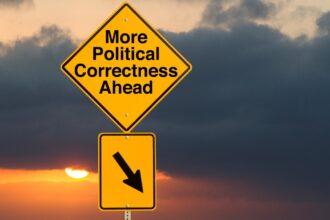Five years after the Me Too movement swept across North America, its impact on Canadian workplaces remains complex and uneven. What began as a hashtag has evolved into a cultural reckoning that forced organizations to confront uncomfortable truths about power dynamics, harassment, and accountability. Yet despite significant progress, the revolution remains incomplete in many Canadian workplaces.
When actress Alyssa Milano tweeted “Me Too” in October 2017, encouraging survivors to share their experiences with sexual harassment and assault, few could have predicted how the movement would transform professional environments across Canada. The cascade of revelations that followed exposed not just individual wrongdoing but systemic failures across industries – from entertainment and media to finance and manufacturing.
For many Canadian organizations, the Me Too movement created an urgent imperative to examine their cultures. “We saw a dramatic increase in companies requesting workplace assessments and harassment training,” explains Dr. Samantha Tran, workplace psychologist at the University of Toronto. “There was a genuine fear of being the next organization exposed for toxic behavior.” This fear-driven response, while perhaps not ideally motivated, nevertheless pushed many companies to implement meaningful changes.
The legislative impact has been substantial. Several provinces strengthened workplace harassment laws, with Ontario’s Bill 132 expanding definitions of harassment and imposing stricter reporting requirements. British Columbia and Quebec followed with their own enhanced protections. These legal frameworks have provided employees with clearer pathways to report misconduct and seek resolution.
Yet laws alone cannot transform culture. The most significant shifts have happened in workplaces where leadership embraced transparency and accountability as values rather than compliance checkboxes. Companies like Montreal-based tech firm Lightspeed have been lauded for creating comprehensive reporting systems that prioritize survivor wellbeing while ensuring fair process. “The key difference is approaching these issues as cultural priorities rather than legal liabilities,” notes employment lawyer Priya Sharma.
Perhaps the most visible change has been the normalization of conversations previously considered taboo. “Before Me Too, discussions about power dynamics or inappropriate behavior were often dismissed as overly sensitive,” reflects Jason Rodriguez, HR director at a major Canadian retailer. “Now these conversations happen openly in meetings, training sessions, and even casual workplace interactions.”
The data tells a complex story of progress. A 2023 survey by the Canadian Labour Congress found that 68% of workers believed their employers took harassment more seriously post-Me Too, yet only 42% felt confident that reporting would lead to meaningful consequences. This gap represents the movement’s unfinished business – creating truly safe reporting mechanisms free from retaliation.
For marginalized workers, the promise of Me Too remains especially unfulfilled. Indigenous women, people with disabilities, and temporary foreign workers continue to face higher rates of workplace harassment with fewer protections. “The movement created important visibility, but hasn’t adequately addressed intersectionality,” argues Daria Williams of the Canadian Women’s Foundation. “The most vulnerable workers often remain the least protected.”
Small and medium businesses present another challenge. While large corporations have resources to implement comprehensive policies and training, smaller organizations often struggle. The Canadian Federation of Independent Business reports that many small employers want to create safer workplaces but lack expertise and resources to develop appropriate systems.
Looking forward, the sustainability of Me Too’s impact depends on moving beyond reactive approaches to proactive culture-building. Progressive organizations are focusing on early intervention – addressing problematic behaviors before they escalate and creating environments where respect is the expected norm rather than an aspiration.
This means rethinking leadership development, performance metrics, and organizational values. Companies like Vancouver-based Hootsuite have integrated respect and inclusion metrics into performance reviews at all levels, making clear that technical excellence cannot compensate for toxic behavior. Similarly, Toronto’s financial district has seen major banks implementing bystander intervention training, empowering employees to safely interrupt problematic interactions.
The pandemic introduced additional complexities, with remote and hybrid work creating new forms of harassment through digital channels while simultaneously reducing opportunities for in-person misconduct. “The challenges have evolved, requiring us to adapt our approaches,” explains workplace consultant Maya Johnson. “Virtual harassment can be harder to identify but often leaves a digital trail that makes documentation more straightforward.”
Perhaps most encouraging is how the conversation has expanded beyond harassment to encompass broader questions about power, equity, and voice in Canadian workplaces. Organizations increasingly recognize that harassment flourishes in environments where power imbalances go unchallenged and certain voices are systematically marginalized.
Ultimately, Me Too’s legacy in Canadian workplaces isn’t simply about addressing misconduct after it occurs, but about fundamentally reimagining professional environments. The most forward-thinking organizations understand that creating truly safe workplaces requires examining everything from hiring practices to leadership structures to communication norms.
The work continues, necessarily imperfect and incomplete. But for millions of Canadian workers who now experience workplaces taking these issues seriously, the change is both meaningful and overdue. The question now is whether this momentum can be sustained and expanded to reach all workers, regardless of industry, status, or identity.
As we reflect on what Me Too has accomplished and what remains to be done, one thing becomes clear: the movement was never about a moment in time, but about a fundamental shift in what we consider acceptable in our shared professional spaces. That shift, however unevenly distributed, has permanently altered Canada’s workplace landscape.
For more insights on cultural movements and their impacts, visit CO24 Culture or explore emerging workplace trends at CO24 Trends.
























